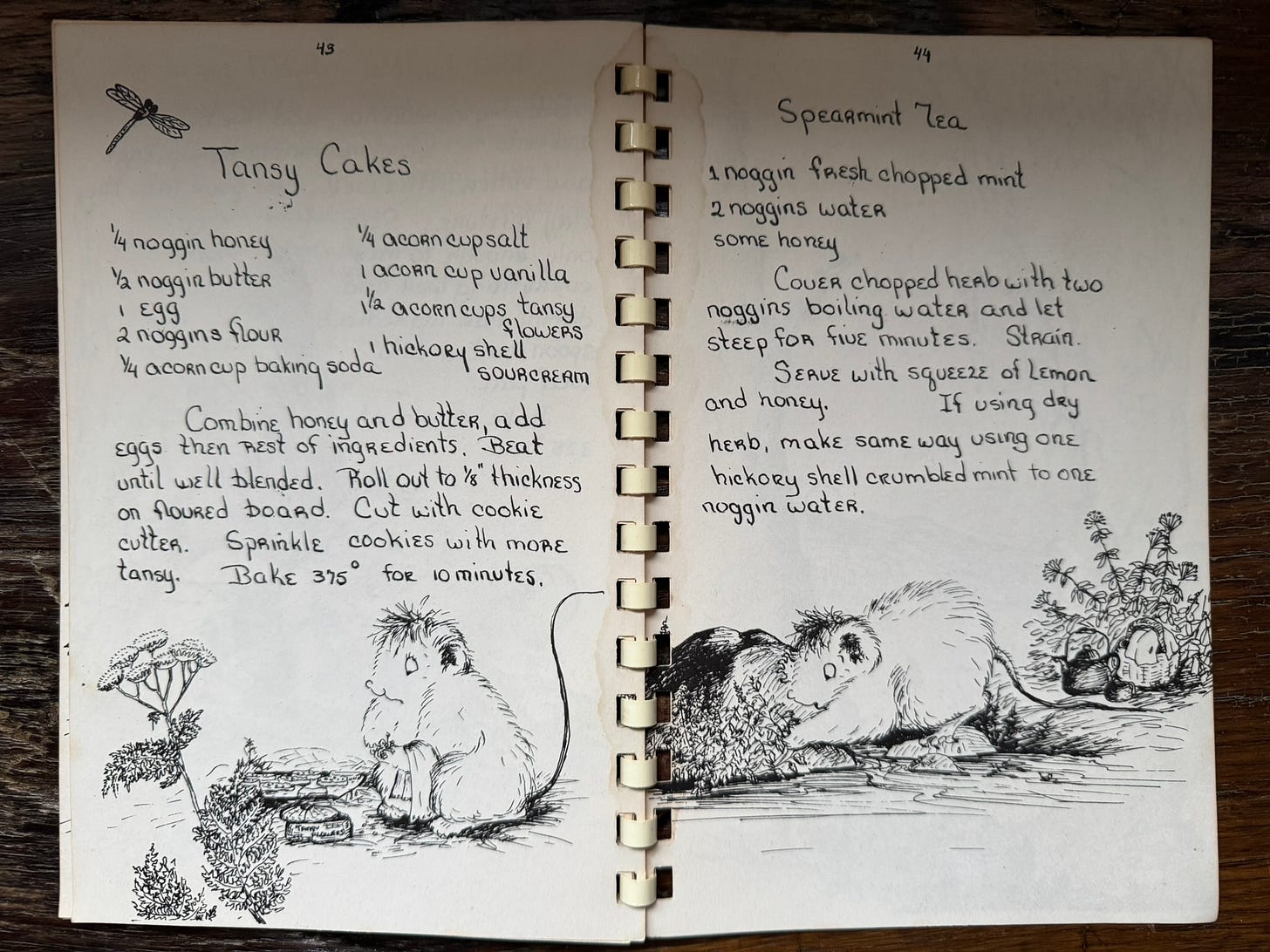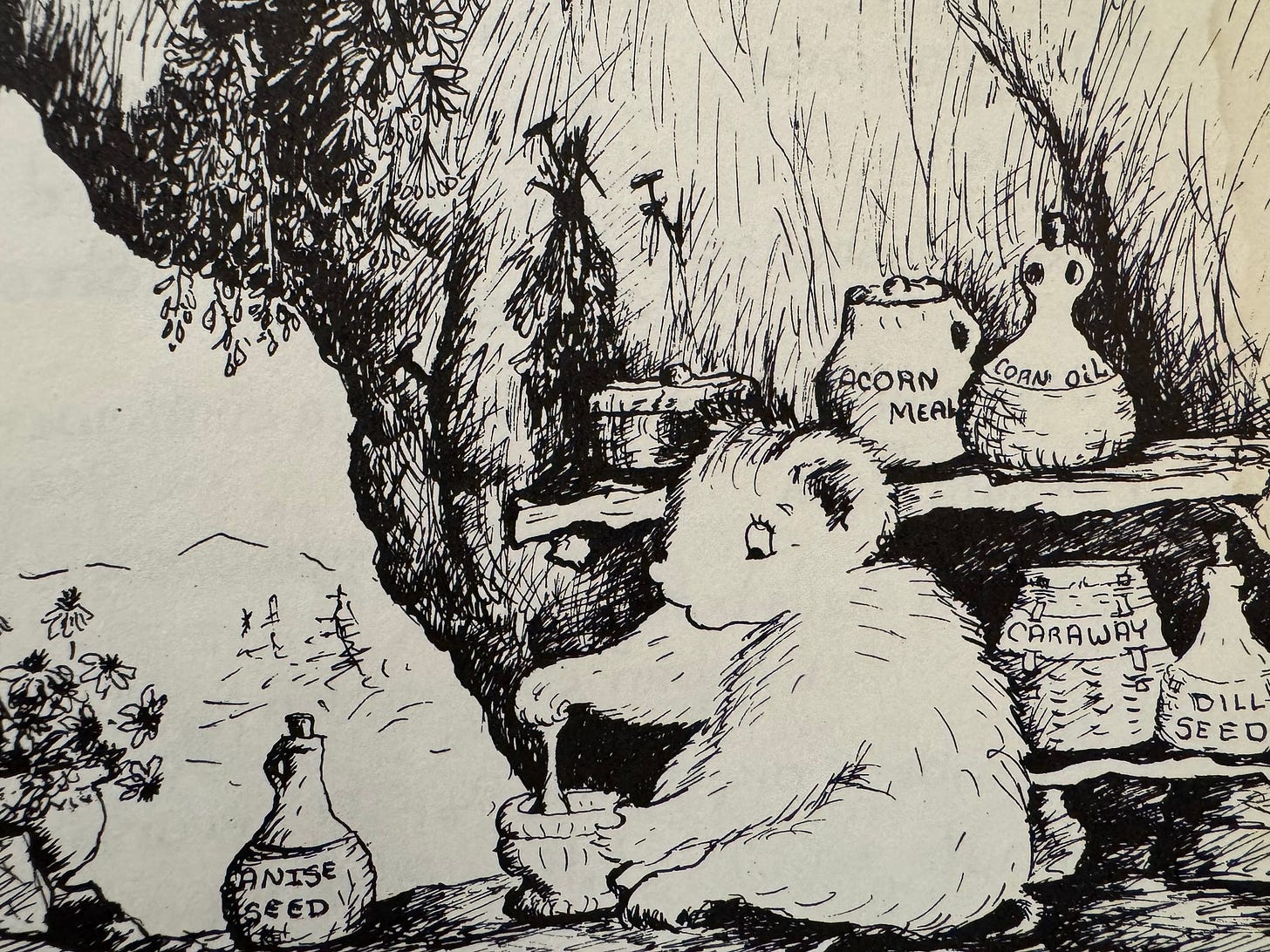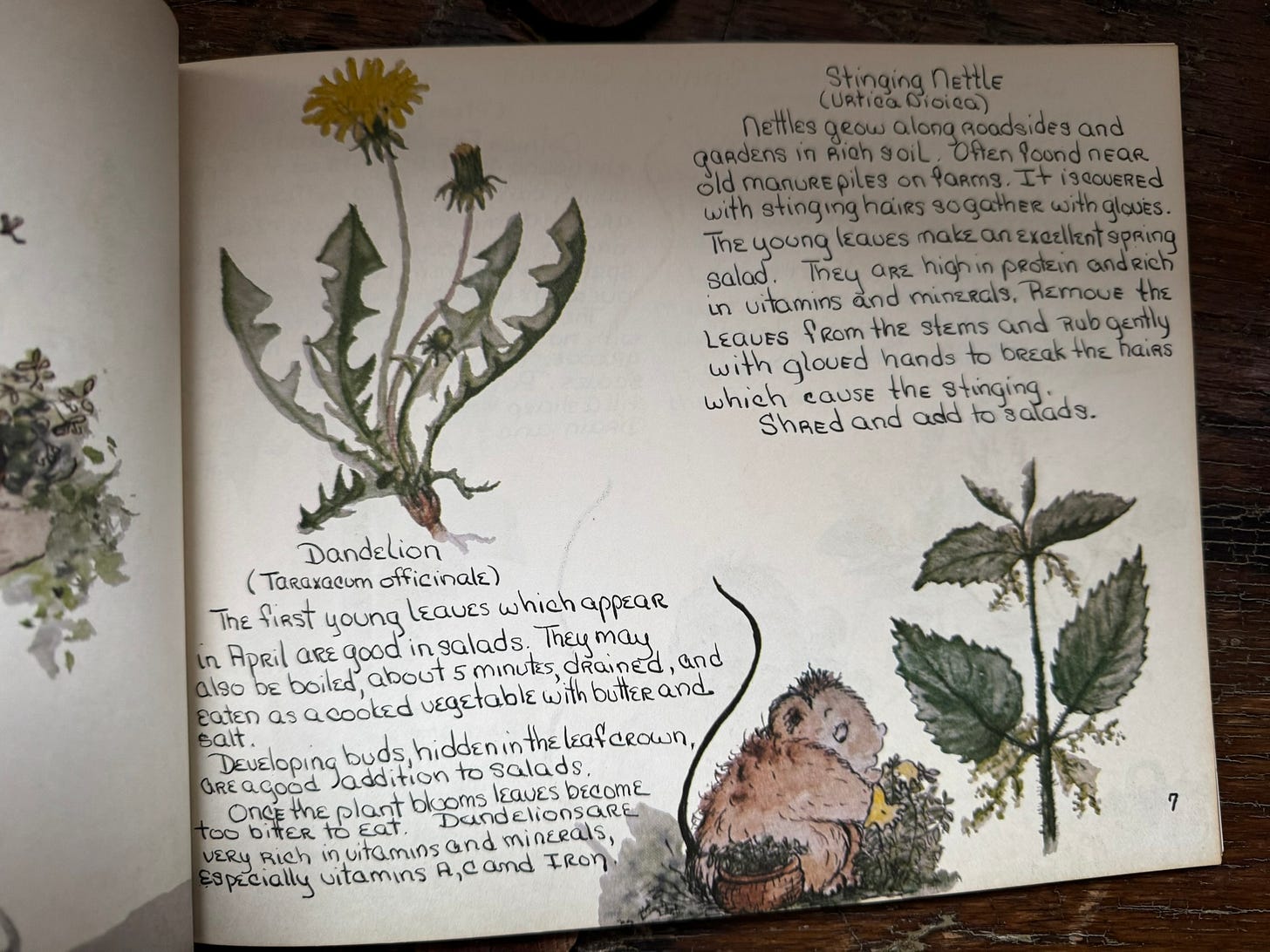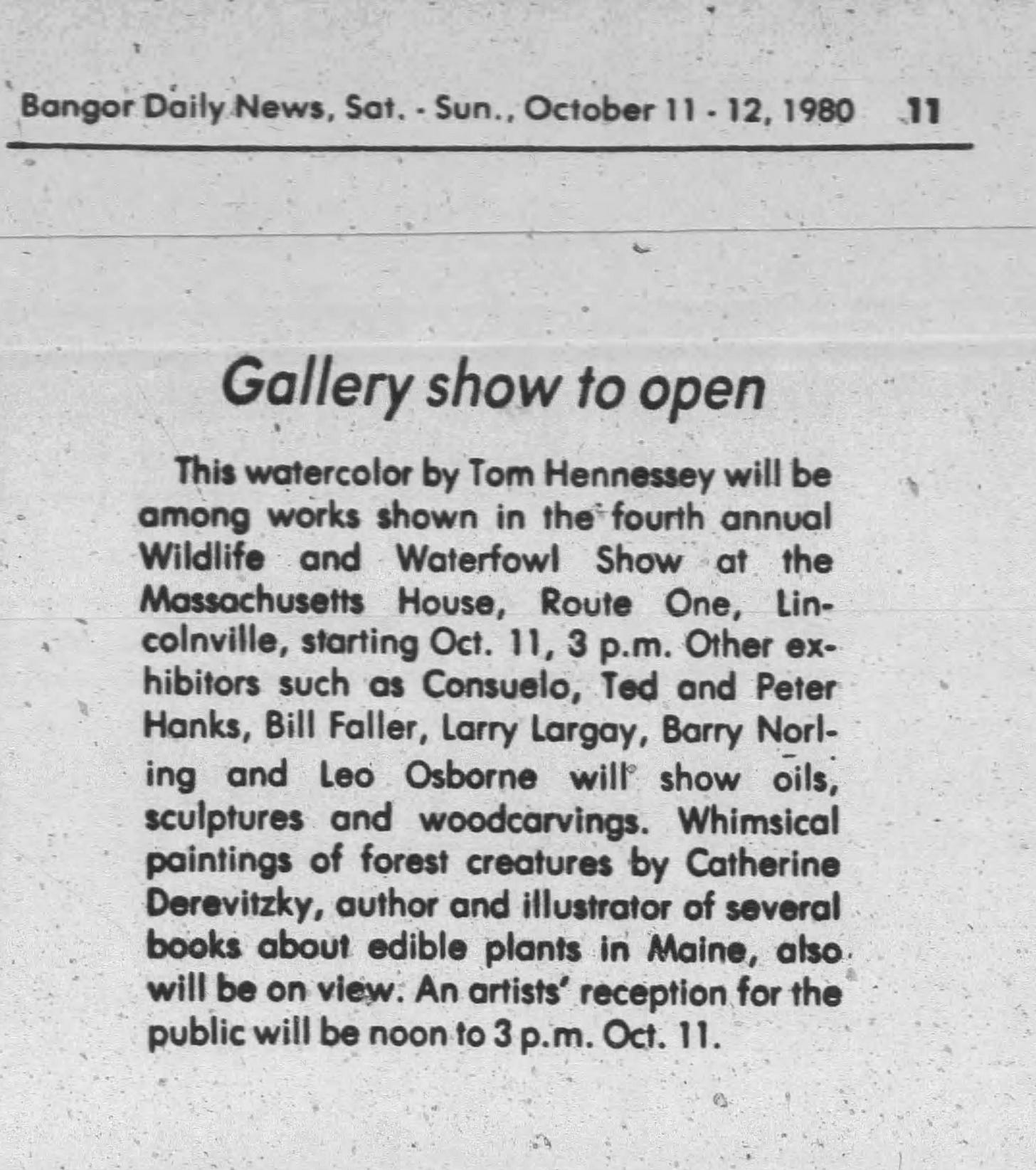I’m opting out of an end-of-the-year reflection or wrap-up post and rolling with a story that starts with being at an antique mall in a massive warehouse of antique vendors in central New York last week and ends with a list of books I want you to know. I was resetting my brain after a handful of days of being deep in the papers of an exhibition I’m trying to pull together around Charlotte and Miriam’s life opening next fall. Pulling myself out of interviews and timelines of their lives, I let myself methodically walk through each booth to see what people see value in, how they merchandise it or don’t, and what may pop out of the piles. This is a longtime favorite pastime. I’m always looking for miniature chairs that fit into the scope of my collection, but other than that, my list is nebulous and, within that cloud, really, really specific. Outside of miniature chairs, I can articulate that I’m looking for children’s books with a certain flavor of illustration or darkness; during the holidays, I keep an eye out for especially bizarre handmade ornaments; in general, anything that flags counterculture (also wonderfully nebulous) can be a score.
These days, I take more pictures of things than buying them. After two hours of wandering through this wildly endless spot, I was awkwardly carrying a wedge-shaped cheese dish and a copy of a children’s book I found deep in a stack of otherwise garbage (to me) books. This is usually the starting point for how I lose hours of my life to deep-dive research about what I’m not supposed to be doing: by finding a book, photo, or object that makes me ask questions or want to know more. I pulled this slim, softcover book from the stack because there was no writing on the binding. I was thrilled to see another thing I look for in the world on packaging, signs, and anything lettered; it’s what I call a fontomatopoeia.

Excuse me as I digress a little to explain this word: fontomatopoeia. My memory isn’t always a reliable source, but it started to be in the mix when Sam Macon and I were working on our film Sign Painters, and I’m fairly sure it was coined by my lovely friend Ira Coyne, who was featured in the film. Fontomatopoeia is a made-up word, a mashup of FONT (a complete assortment of type of one style and size) and ONOMATOPOEIA (a formation of a word from a sound associated with what it is named) = fontomatopoeia. If the book cover above doesn’t quite click for you and you need more examples to understand, check out this defunct Instagram account I lost access to forever ago.
Okay, back to the book score from the antique mall. Fiddleheads and Mustard Blossoms: A Guide to Edible Plants of the Forest and Meadow is a self-published (love) children’s book from the 70s; the author and illustrator was a woman (always a bonus), the content crosses over into regional foodways and forging, AND there is a fontomatopoeia on the cover. With this combination of wins, I can’t believe I debated the $12 sticker price for one second and felt the pull of productive procrastination I knew would kick in the second I returned to my rental. Who was this woman, Catherine Derevitzky? Did she have other books? Is she still a plant person as an elder doing this type of educational illustrative publishing? Was she connected to any counterculture communities or regional stories?
Starting with the book in hand, this is what I found using my available resources: Anestry.com, Newspaper.com, and Google. It’s not much, but the world is small, and I know a lot of people based in Maine’s Midcoast, so maybe this post will bring me closer to knowing more. If anyone knows Catherine, I’d love to tell her how beautiful these books are and how they would find a new audience generation if they were republished (I’m looking at you, small press readers).
Catherine Derevitzky was likely born around 1954 and seemingly attended high school in Belfast, Maine. She married Jack Ross in 1977 but continued to author books under her maiden name. I found a record of four books by Derevitzky, but that’s not to say more don’t exist that aren’t online. Aside from the one I found at the antique mall, I immediately ordered two others from online used booksellers. The three books I now own (pictured below, all have amazing examples of fontomatopoeias on their covers) are rooted in the counterculture food movement I grew up immersed in because of my mother’s work in the natural food industry. Derevitzky’s fourth and last book to be published (that I could find), Bimsi and Bamsi: An Adventure in the Maine Woods (Gannett Books, Portland. 1985), is out of my scope of interest. All four books share a 1970s aesthetic, handwritten and illustrated with Derevitzky’s fantastical anthropomorphized woodland creatures that resemble a combination of vole and chubby mouse.
Her first book, Tansy Cakes with Honey: a Cookbook (1974), was self-published in Morrill, Maine. The copy I bought, the cheapest version I could find, is a well-worn, stained B&W with a plastic white comb binding. I’m not a huge snob about bent or worn pages, but forget about it if something shows up smelling like Febreze; it may as well be trash. There is another edition that is more like her other books: soft cover, full color with what looks like a stapled binding. I couldn’t find any information about editions attached to either.
The short handwritten introduction starts, “This cookbook is of meatless dishes using the right combinations of grains, milk, cheese and eggs to provide protein complete meals.” The next page is titled “Measuring Equivalents” and explains the cookbook’s charming ratio of mouse to human used throughout. For example, a hickory shell = one tablespoon, and an acorn cup = one teaspoon.


In 1977, Derevitzky self-published her second book, Fiddleheads and Mustard Blossoms: A Guide to Edible Plants of the Forest and Meadow (cover pictured earlier). “A guide to edible wild plants of Eastern United States… All plants are illustrated and followed by the plants common location and a simple method of preparation.”
Following the same format, a seemingly contemporary seashore follow-up, Lobster Pots and Searocket Sandwiches, was self-published in 1979.
Beyond a few different book advertisements digitized into local papers and this listing for Derevitzky’s group art show in 1980, I couldn’t find anything else about her life or work. The latter leads me to fantasize about framed illustrations of these foraging woodland creatures floating around in the Midcoast with additional copies of these books for you to find and add to your libraries. And so, that wraps up my report for you. I’ll be bringing this sense of inquiry and joy of research with me into the new year, and I appreciate that you are along for the ride.
I will leave you with the end-of-year gift of inspiration that happens to be holiday-themed. Have you read about the Santa Claus Army? An incredible feat of direct action and resistance acted out by a 1974 Danish political theatre troupe, the same year Derevitzky’s first book came out (love a mental timeline). I highly suggest adding this 1975 film documenting their synchronized and inspiring mayhem to your down time to-do list.














Would love to help with any on site research. I wonder if the Belfast Free Library has any info on her 🌿
fontomatopoeia!!! what a gift to be given the word for the lettering style I love so much! Love having language to style formats <3 beautiful offering today!